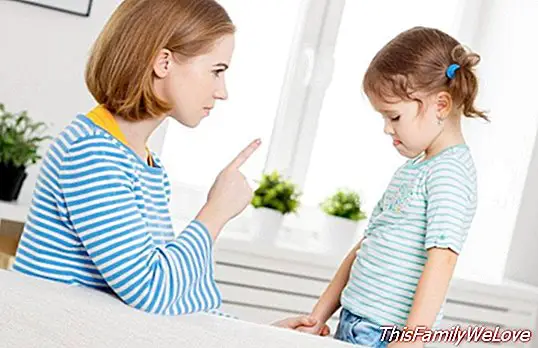Situations in which parents should say no to their children

In the education of every child there must be certain limits. Rules that indicate to the smallest what they should or should not do, for this reason in some cases the negative sentences must be present in the lives of the smallest. For this reason the word "do not"should be used by adults when establishing standards of behavior in their children.
While it can not be said do not to everything, since we must provide the children with some autonomy and allow them to make mistakes so that they learn from their mistakes, there are other occasions where there is where to oppose the children to perform certain activities. Laura Markham, a child psychologist, proposes some contexts where parents should impose these limits on their parents.
When to say no
These are some situations where the "no" must be present in the lives of the smallest of the house:
- You can not keep playing. Has the child not finished his homework? Do you want to give preference to your fun rather than obligation? In these cases parents should tell their children that they can not continue playing, they should assume their responsibilities before.
- You must not respond with violence. Has the child received a blow from his brother or a partner? If the answer that the son wants to give is to return this blow, we must respond that he can not respond with more violence to this situation.
- You can not watch TV at this time. Should the child be studying or in bed? Is there a series that you want to watch at a time when you should not be in front of the TV? Parents must be inflexible to this requirement and answer no.
- He should not also be present in the tantrums while children do not stop and continue to show nervous behavior, we must show that these attitudes are not going to be spoiled.
- No requests about petitions related to behaviors that they were previously told they could not do. Children must understand that no matter how much they ask for it, they will succeed.
How to say no
At the same time, Markham also gives a series of tips about when and how to say no to the smallest of the house (and the not so small ones):
- Lose the fear of not. Saying "no" to children is not hurting them, it is marking a limit and an opportunity for children to learn what is right and what is wrong.
- It's not personal. With the "no" the children can take it as something personal, parents should make their children see that it is not like that. That is a lesson and that in the end they want to help them.
- Leave the door open to "yes". In some situations parents can make their children see that "yes" is possible even if they hear a "no". For example, if they fulfill their responsibilities, they can watch television (and it's not too late).
Damián Montero




